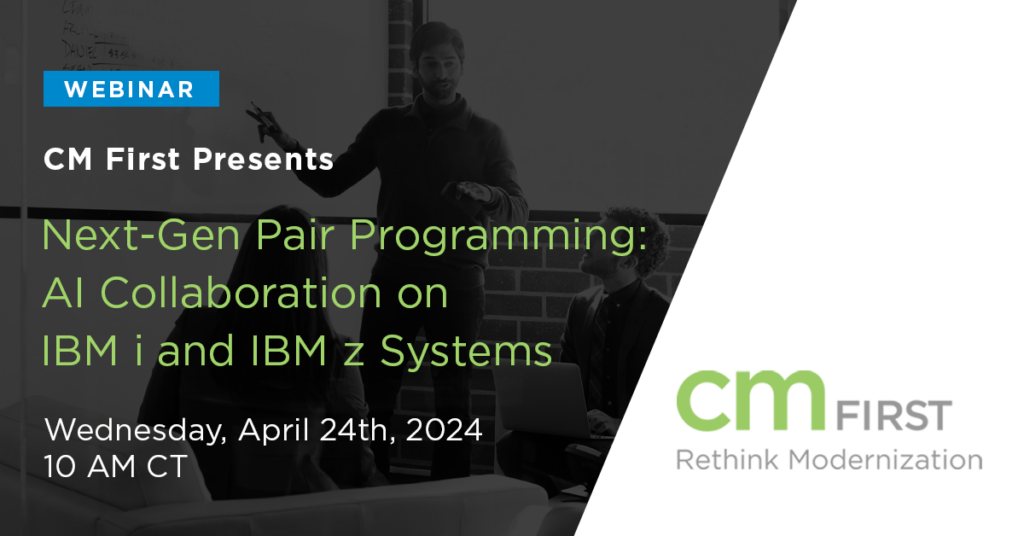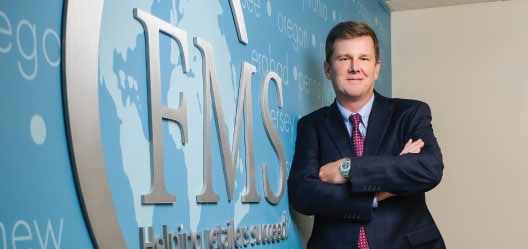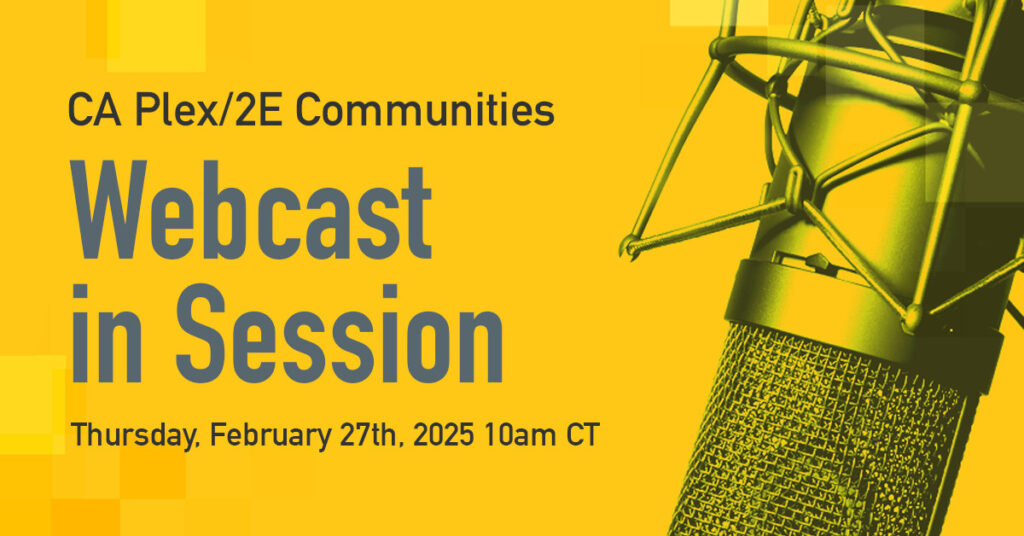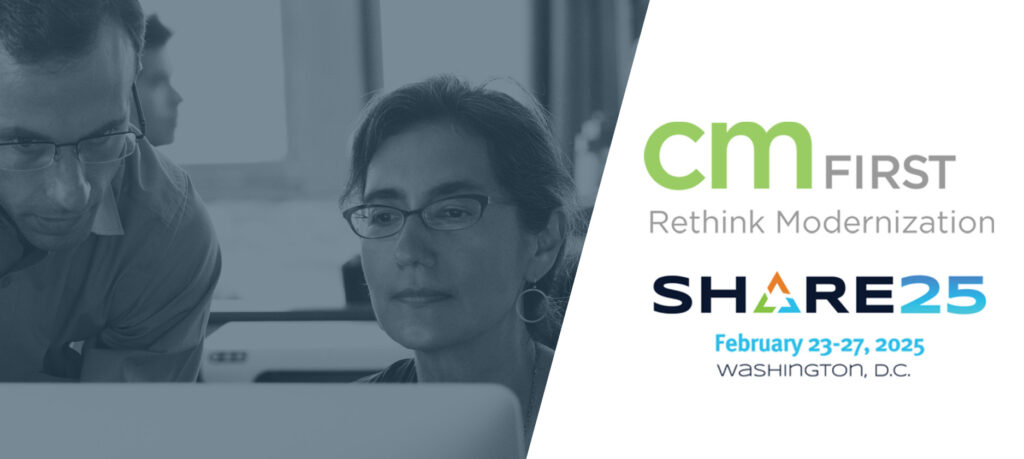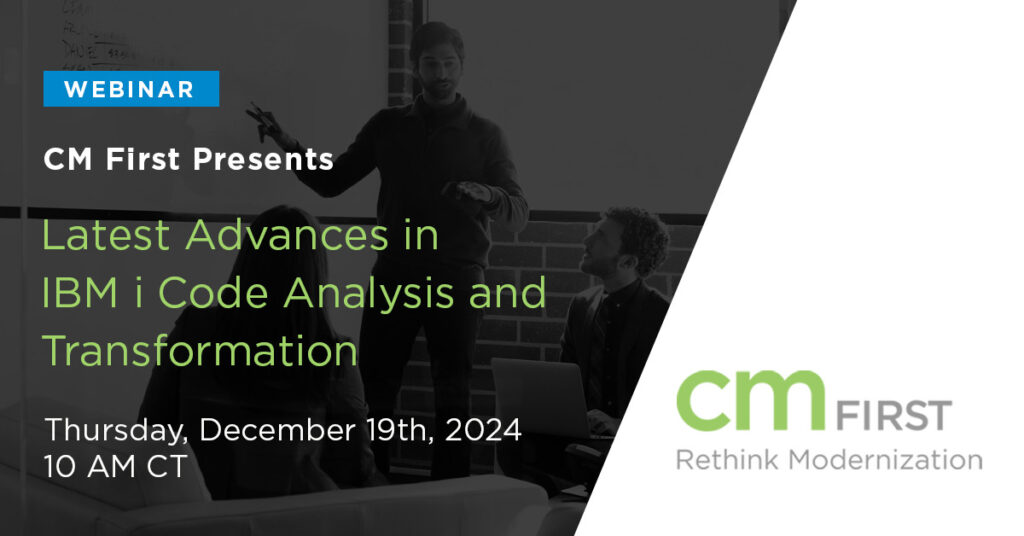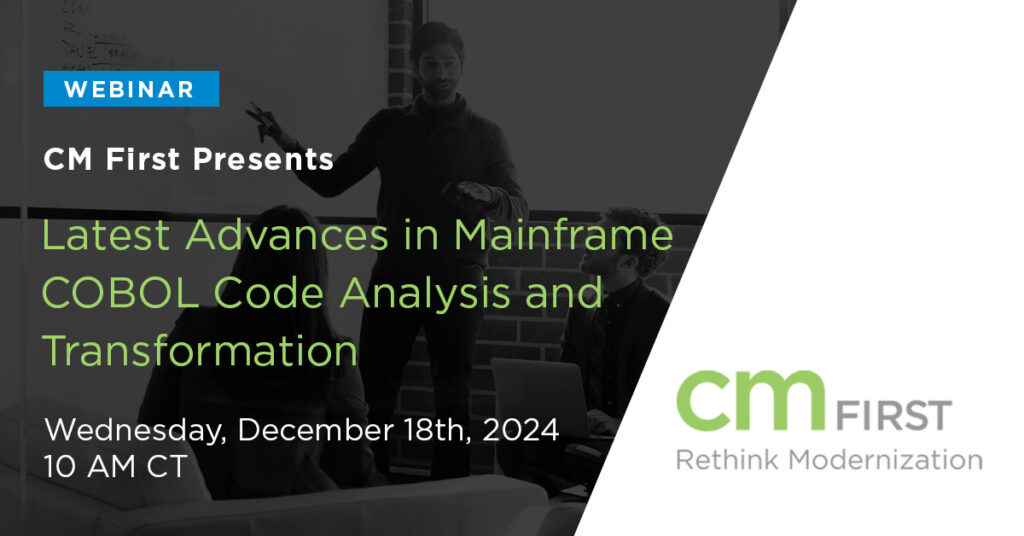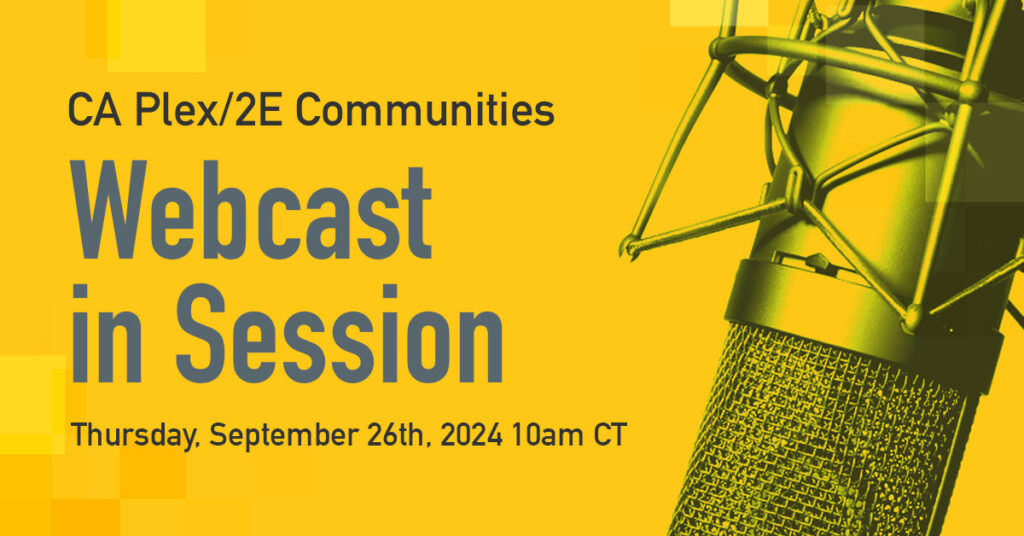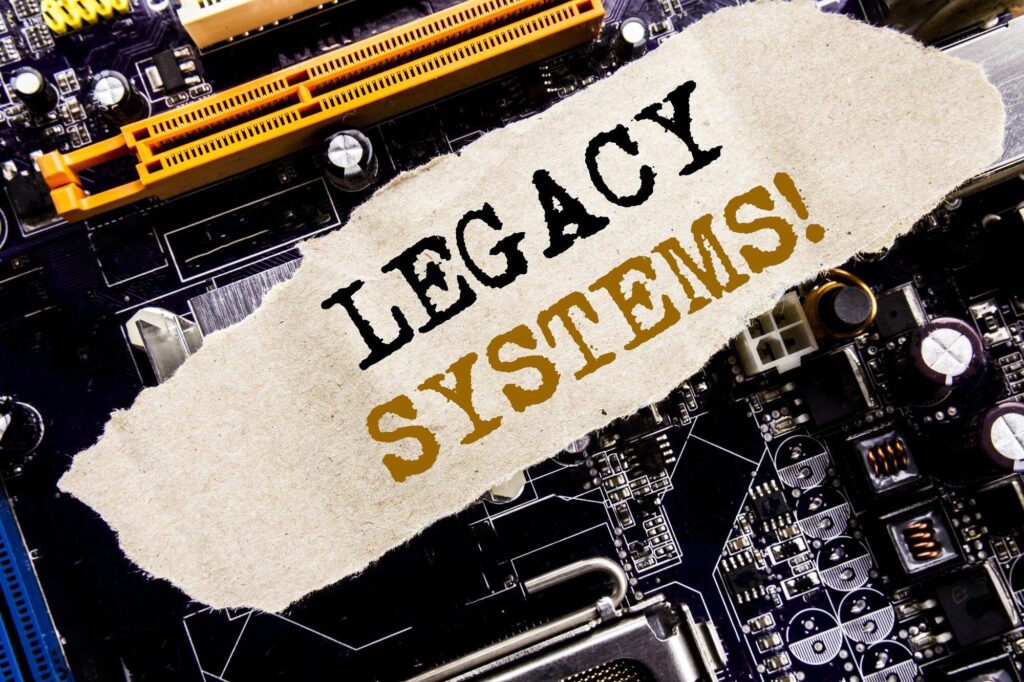Finding hard coded business rules in millions of lines of COBOL code in days instead of weeks with CM evolveIT. When companies began to use computers to solve tough problems, no one expected that the programs they wrote would last as long as they have. Coding was a new discipline which meant that developers, learning
A cutting-edge webinar that merges the art of pair programming with the innovation of AI for both IBM i and IBM z systems. Dedicated to COBOL developers working on IBM's midrange and mainframe platforms, offering a deep dive into how AI can amplify coding collaboration and efficiency.
IBM Systems Magazine recently put the spotlight on an ambitious FMS Solutions modernization project completed with the help of CM First Group, a successful project resulting in significant savings in time and resources. Getting Results First, the results from IBM Systems Mag: …by undertaking this partnership with CM First, Robert Graybill, president and CEO, FMS,
Modernization project to strengthen grocery service provider's competitive position.
Watch the CA 2E (SYNON) and CA Plex First Quarter 2025 Community Webcast for conference updates, technical talks, and more.
Join CM First at SHARE Washington D.C. 2025 Are you heading to SHARE in Washington D.C., February 24–26, 2025? Make sure to add Booth 428 to your must-visit list. Here, you’ll discover the tools, technologies, and expertise you need to modernize legacy systems and stay ahead of the curve in the fast-evolving world of IT.
Join us for an enlightening session focused on the CM evolveIT new 11.7 release. Tailored for IBM i developers, this session showcases groundbreaking enhancements aimed at revolutionizing your code analysis and transformation workflows.
Join us for an enlightening session focused on the CM evolveIT’s new 11.7 release. Our upcoming webinar will reveal how the latest advances in Mainframe COBOL code analysis and transformation are poised to reshape your development processes.
Register now for the CA 2E (SYNON) and CA Plex July 31st 29th 2024 Community Webcast for conference updates, technical talks, and more.
Everything will be just fine for maintainers of CA 2E (Synon) systems in spite of IBM sunsetting PL/I support.



